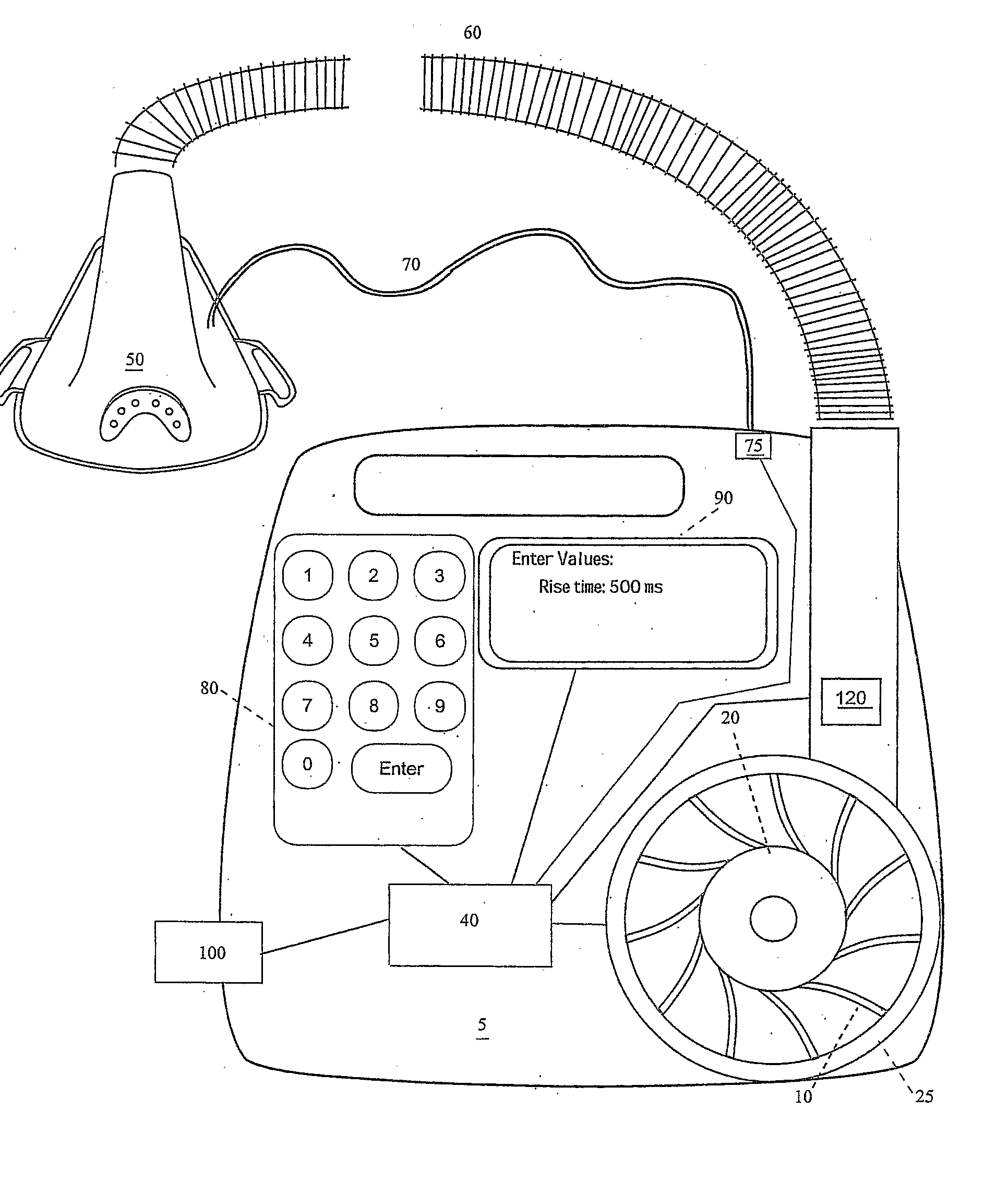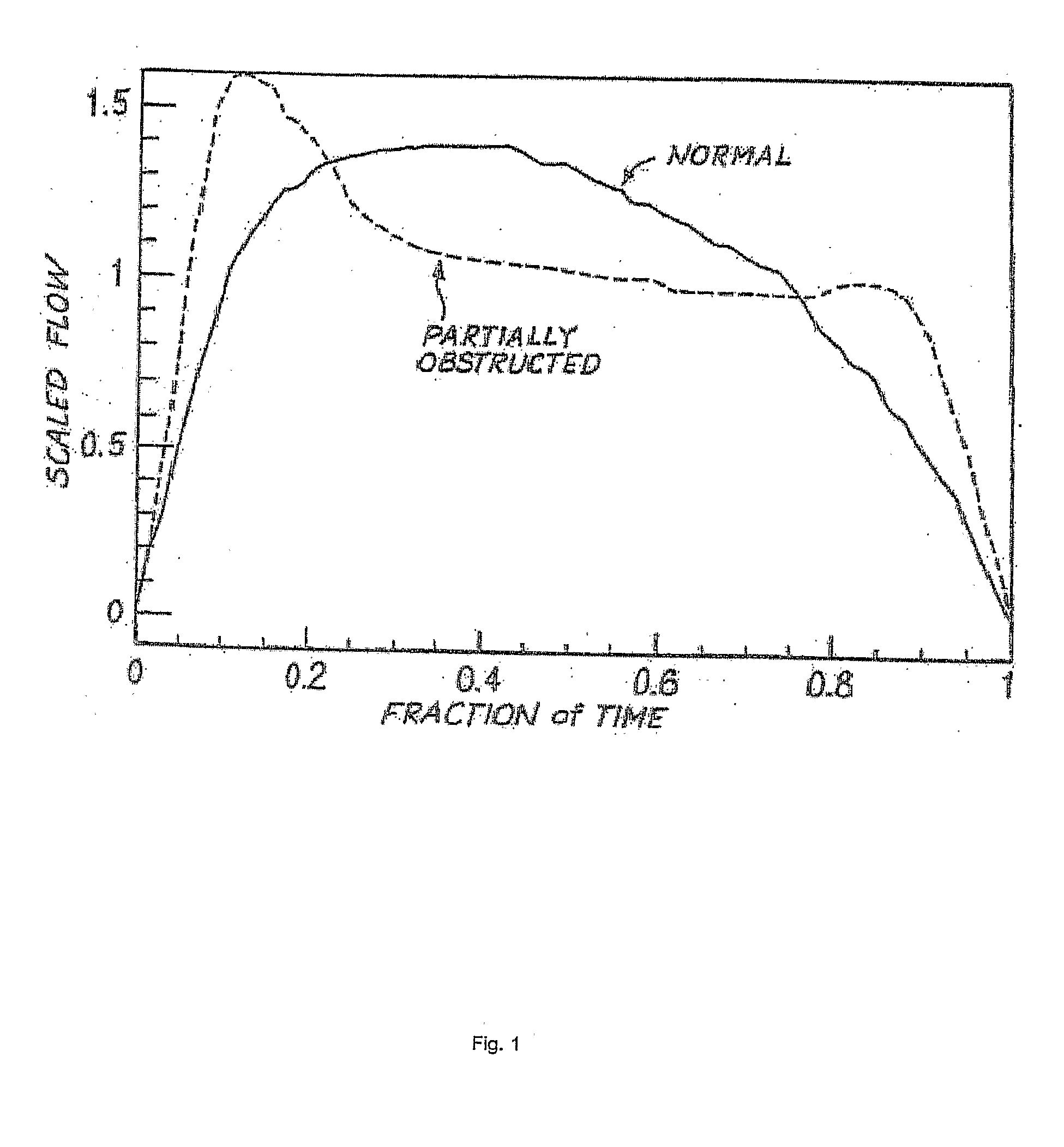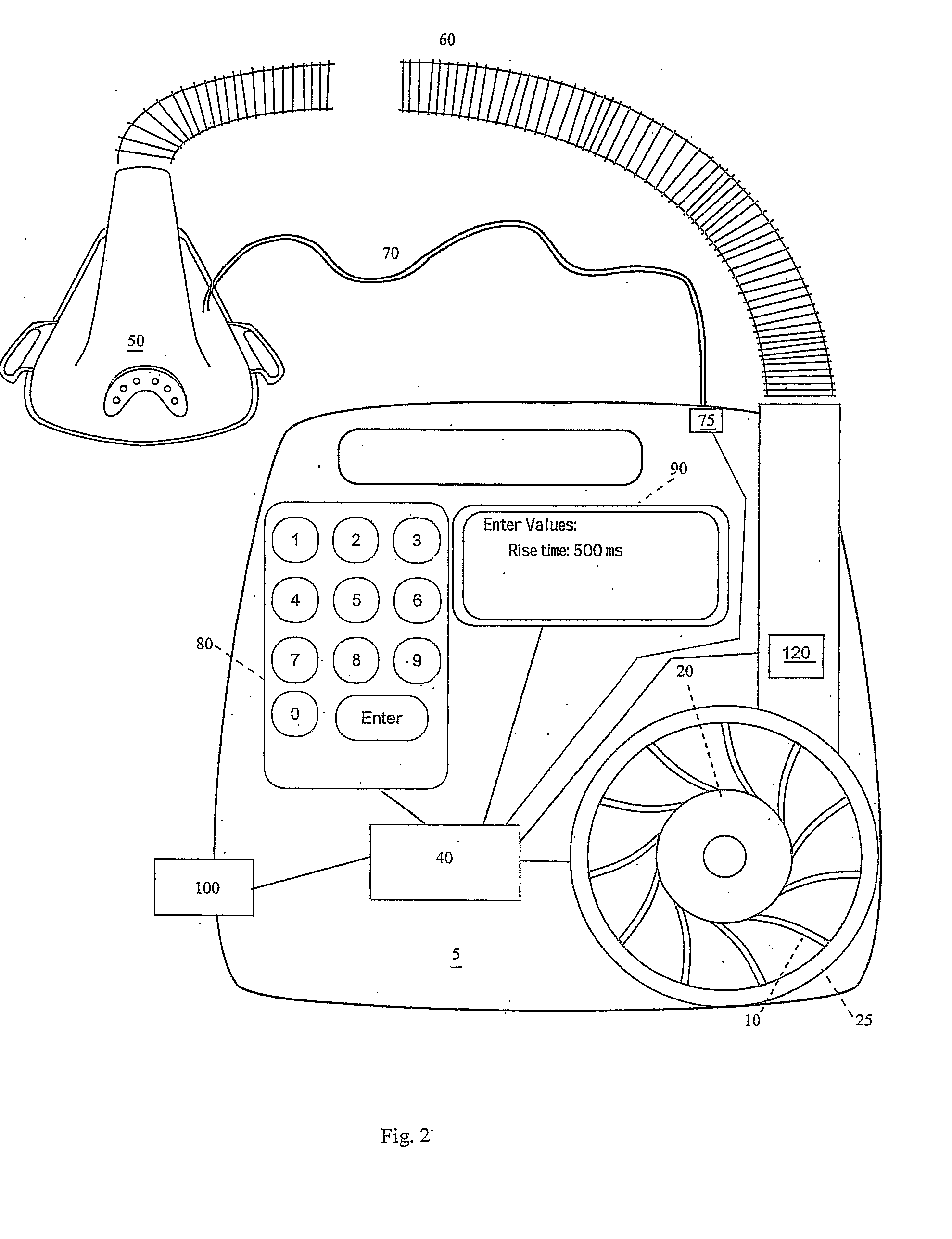Method and Apparatus for Resolving Upper Airway Obstruction, Resistance or Instability
a technology of resistance or instability and upper airway, applied in the direction of mechanical equipment, valves, respirators, etc., can solve the problems of increasing the end-expiratory pressure alone, reducing patient comfort, and reducing the degree of patient comfort, so as to reduce or eliminate the obstruction of the upper airway, the effect of resistance or instability
- Summary
- Abstract
- Description
- Claims
- Application Information
AI Technical Summary
Benefits of technology
Problems solved by technology
Method used
Image
Examples
Embodiment Construction
[0036]FIG. 2 shows apparatus suitable for performing the invention. A ventilator 5 provides a supply of air or breathable gas at positive pressure along an air delivery conduit 60 to a patient interface 50, which in the illustrative form is a mask. A sensing line 70 provides a means for the pressure sensor 75 to measure pressure within the patient interface 50. A volumetric or mass flow sensor 120 measures the flowrate of air along the air delivery conduit 60. An electric motor 20 and its impeller 10 reside in a volute 25 and are under the control of a programmable controller 40. There is a keypad 80 and display 90 allowing various parameters to be adjusted. There is an interface 100 enabling data transfers between the ventilator 5 and other devices, such as a computer or controller (not shown).
[0037]A range of pressures of air can be provided depending upon the speed of the blower 20. A base level of positive air pressure (sometimes referred to as the “EEP” or the “EPAP”) is delive...
PUM
 Login to View More
Login to View More Abstract
Description
Claims
Application Information
 Login to View More
Login to View More - R&D
- Intellectual Property
- Life Sciences
- Materials
- Tech Scout
- Unparalleled Data Quality
- Higher Quality Content
- 60% Fewer Hallucinations
Browse by: Latest US Patents, China's latest patents, Technical Efficacy Thesaurus, Application Domain, Technology Topic, Popular Technical Reports.
© 2025 PatSnap. All rights reserved.Legal|Privacy policy|Modern Slavery Act Transparency Statement|Sitemap|About US| Contact US: help@patsnap.com



